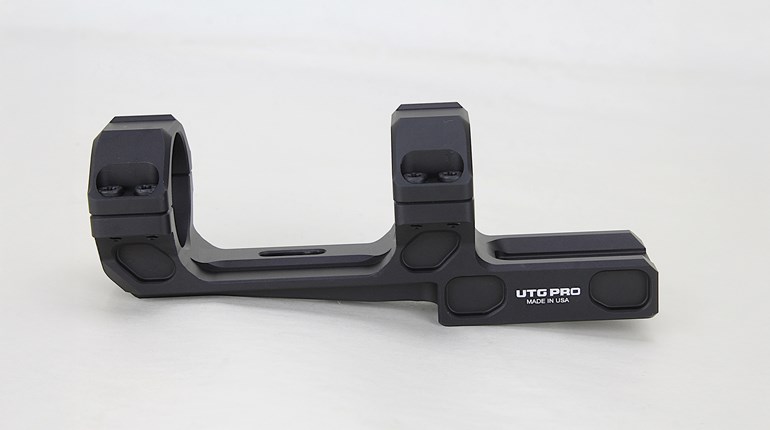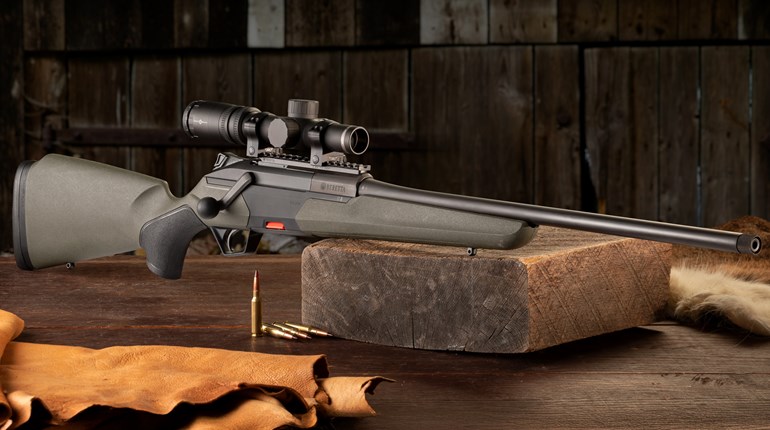
- Competitive success may hinge on a single shot made under difficult conditions where an extra margin of performance is critical.
- Many competitors do not have the time or equipment to handload.
- Ammunition factories can manufacture match-grade ammunition as good as or better than most handloads.
While experienced competitors can readily accept the first and second facts, many will argue the third point vociferously.
When advancements in firearms technology from 1890 to 1920 resulted in ammunition of improved quality and accuracy, competitive shooters eagerly took advantage of such developments. In response to demand, major domestic manufacturers began offering match grade ammunition in selected calibers in the 1920s and 1930s. A typical match grade offering was the .30-06 Spr. cal. with a 180-grain FMJBT bullet made by the ammunition maker. Government arsenals also manufactured match grade ammunition.
A key component in this effort was the bullet. Unlike today, there were no aftermarket match bullet manufacturers. Match grade bullets had to be made by the domestic manufacturers or government arsenals themselves. Production runs were small and machinery was not optimized for close-tolerance bullet manufacture. Still, improvements were made, and match grade ammunition of the day performed quite well.
In the 1950s, competitors seeking increased accuracy were offered a new option in the form of high quality, aftermarket match grade rifle bullets. Handloading for that extra margin of performance now made sense and nearly every serious competitor reloaded. Willing or not, reloading became necessary to maintain a competitive edge as aftermarket, match grade bullets proved far superior to those made by government arsenals and ammunition manufacturers. This was possible because aftermarket bullet makers optimized their designs, manufacturing processes and tooling to manufacture match grade bullets. This was something the arsenals and ammunition manufacturers could not duplicate economically. As a result, ammunition manufacturers ignored centerfire rifle competitors to focus on rimfire and shotshell competition.
By 1975, aftermarket manufacturers of match grade rifle bullets had carved a significant niche in the market and most serious rifle competitors handloaded for maximum accuracy. Ammunition manufacturers supported handloading competitors by offering match grade primers and cartridge cases. However, the cost of handloading continued to increase mainly due to increasing labor costs. Competitors began asking, "What is my time really worth?" Time spent reloading was time away from crucial practice and training. When labor cost was calculated at real values, in truth, reloading for competition was very expensive. This reopened the centerfire rifle match ammunition market for cartridge manufacturers.
Only this time, things were different. Instead of trying to manufacture match grade bullets for themselves, ammunition makers recognized the success and expertise of aftermarket bullet manufacturers by incorporating such bullets into their own product lines. This reduced costs and capitalized on the recognized competitive success of the aftermarket bullets. In addition, ammunition manufacturers used their ballistic knowledge, purchasing power and control of the manufacturing process to manufacture match grade ammunition that handloaders could not duplicate. Here's how they did it:
Primer
Primers for handloading are dried before shipping. In addition, the anvils are left protruding out from their normal position to desensitize the primers for shipping. Seating the primer in the cartridge case pushes the anvil tip into contact with the priming mixture, thus sensitizing the primer.
While this system works well, it is not as good as seating the anvil on a wet primer then allowing the primer mixture to dry around it. Factory ammunition is primed wet which results in a greater primer consistency handloaders can not match.
Powder
Here ammunition manufacturers exercise their purchasing power and ballistic experience to obtain large quantities of propellant from a single lot that tests extraordinarily well. Additionally, ammunition manufacturers have access to production lots of propellants that vary from the canister powders familiar to handloaders. This enables ammunition manufacturers to tailor a powder for a specific application. Using their buying power to purchase powder of proven quality exactly matched to the ballistic requirements of each cartridge gives manufacturers a significant advantage over handloaders.
Cartridge Case
As cartridge cases are manufactured, variations in case mouth thickness occur as a natural result of the ebb and flow of tolerances. Handloaders must compensate for this by turning their case necks to assure minimal bullet runout. On the other hand, manufacturers have the luxury of sorting through various lots of cartridge cases to find those with minimum case mouth variation. These are then designated for loading match ammunition.
Bullet
Today, ammunition manufacturers purchase match rifle bullets from aftermarket bullet manufacturers. Once again, purchasing power assures them of long production runs devoted exclusively to their requirements as well as low prices. As a result, the consistency of the bullets is better with fewer variations.
Loading
After all this effort to assure top-quality components, it would make no sense to load match ammunition on just any machine run by a novice operator. Rather, journeyman operators with extensive experience are chosen to load match ammunition on machines especially set up, adjusted and dedicated for this purpose. Also, the operators and machines loading match ammunition allow quality and not quantity to dictate output. In other words, the operator tries to load the best ammunition possible without much concern as to the amount produced during a shift.
Similar consideration guide the quality control process checking match ammunition production. High quality is sought and expected, but must be proven by test and is not an accident. When match ammunition is being manufactured, quality tests may be more frequent and more thoroughgoing. In some cases, even the packaging and handling procedures for match ammunition may be different from regular product.
Performance
In the end, it all comes down to performance. How well will match grade rifle ammunition perform? Actually, very well indeed and considerably better than many handloads. Test groups of five shots measuring about 0.50-inch extreme spread at 100 yards are not uncommon and groups measuring less than 0.30-inch extreme spread are not unknown. On average, match grade rifle ammunition can be expected to be capable of producing five-shot groups measuring significantly less than 1-inch extreme spread at 100 yards. This is more than 200 percent better than standard practice ammunition of the same caliber.
Is match ammunition a bargain? It is if you consider that match ammunition costs about 50 percent more than standard ammunition but offers performance 200 percent better.
Reputation
When ammunition manufacturers make match grade ammunition, they try to make the very best ammunition possible by bringing to bear their considerable knowledge of the manufacturing process. Combining this with the very best components makes truly exceptional ammunition.
After all, their reputation depends on the performance of their product. Competitors expect more from a match grade product—with factory loaded match grade ammunition, they get it.


































